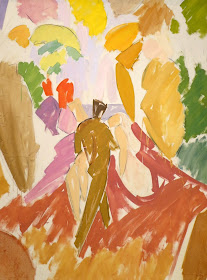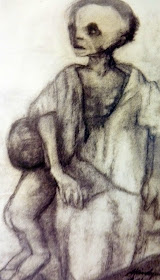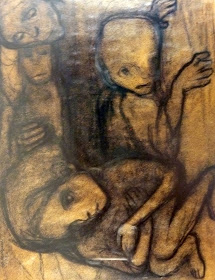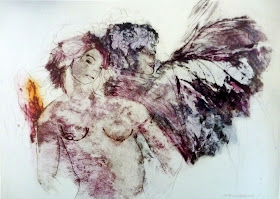I first came upon Per Kirkeby's paintings in an exhibition in the Byzantine Museum in Athens and decided to explore his work further and do a post on him, which you can see here .
By the time Kirkeby had completed a Masters in arctic geology he was already part of the experimental art school Eks-Skolen and working as a painter, sculptor, writer and lithographic artist and he has pursued these activities ever since. His interest in geology and nature in general, still play a crucial role in his artistic expression.
He was also a member of the Fluxus group and was influenced by Pop Art in the 1960s. Later he was influenced by Tachism and Abstract Expressionism. The vigorous brushwork and chromatic beauty of his paintings and the sensuous modelling of his rough black bronzes have earned him the title 'lyric expressionist'. His paintings tend towards the abstract.
In Louisiana:
for more on Louisiana, go here
The Sun Temple, 1969
Mongolian Felt Tent, 1968
Birds Buried in Snow, 1938
The Hut, 1968
Untitled, 1968
Two Arms I, 1981
Small Head and Arm, 1981
Laesoe, 2001
Green Spring, 1988
Landscape, 1983
Mother and Child, 1938
Head and Arm: Gate, 1938.
In the Statens Museum for Kunst:
for more on the Staatens Museum for Kunst go here
A Romantic Picture, 1965
The title of this painting offers an ironic contrast to the watered-down romanticising emotionalism that Kirkeby, as part of the avant-garde, rejected. Pop Art took its point of departure from consumer society as one way of breaking down what it regarded as a petty bourgeois concept of art. The motifs are from popular culture: magazines, comic books, and are transferred by means of templates. All contents are wryly kept at arm's length drawing on general ideals and cliches about desire. The painting is executed in a self-aware manner, replacing deep emotion with surface seduction.
In The Black Diamond:
for more on the Black Diamond, go here
Untitled, 1998
looking closer.







































































